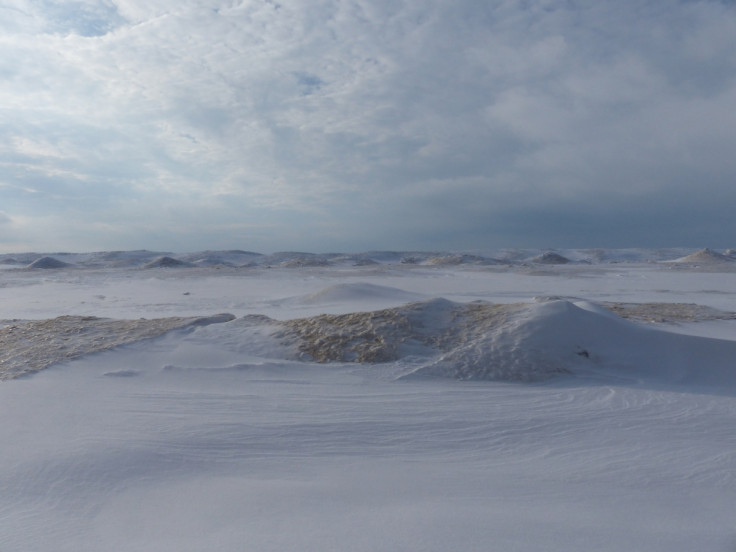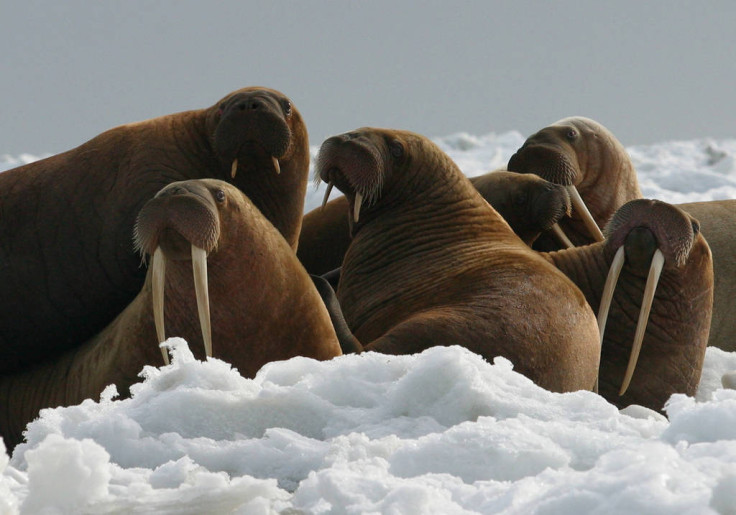Arctic Report Card 2015: Climate change wreaks havoc in North Pole

Air temperature in the Arctic was more than two degrees Fahrenheit above average in 2015, says the NOAA Arctic Report Card 2015. The report also showed that maximum sea ice coverage was the lowest since records began in 1979.
The National Oceanic and Atmospheric Administration (NOAA) reported increasing air and sea surface temperatures, decreasing sea ice totals, and the changing behaviour of sea life in the 2015 Arctic Report. The official report, the tenth annual report of its kind, was released on 15 December.
NOAA reported that the average air temperature was 2.3 degrees Fahrenheit (-16.5 degrees Celsius) above the average annual temperature – the highest ever recorded since records began. That is also 5.4 degrees Fahrenheit (-14.7 degrees Celsius) more than the beginning of the 20<sup>th Century.
"The Arctic is warming twice as fast as other parts of the planet, which has ramifications for global security, climate, commerce, and trade," said Rick Spinrad, chief scientist for NOAA. "This year's report shows the importance of international collaboration on sustained, long-term observing programmes that provide insights to inform decisions by citizens, policymakers, and industry."
The report also showed that the temperature of the Arctic Ocean continues to rise. The mean sea surface temperature in August 2015 – when ice is most depleted in summer – was up to 46 degrees Fahrenheit (8 degrees Celsius) in some areas. Scientists say that these areas – The Chukchi Sea and eastern Baffin Bay – continue to show the largest warming trends, of up one degree Fahrenheit (-0.2 degrees Celsius) per decade, since 1982.
This year's maximum Arctic sea ice was the lowest since records began, and occurred 15 days earlier than average. Not only that, but when the ice was at its most depleted in September, it showed the fourth lowest recorded amounts since records began, in 1979.
June snow cover in the Arctic was the second lowest since records began in 1967. The researchers at NOAA found the rate of decreasing amounts of snow cover continued this year, at a rate of 18% per decade since 1972.

Walruses have been increasingly recorded changing their habitat, from Arctic sea ice to inland north-west Alaska. They usually use sea ice for mating, finding food and for shelter from storms and predators, but the decreasing amount of sea ice in recent years has forced them to move elsewhere. The recordings, taken through aerial observation, has meant a harder struggle to find food for walruses, as well as stampedes from overcrowding – killing the young.

Subarctic fish are migrating north into Arctic waters. The predatory fish, including cod and beaked redfish, can now move into waters which were previously too cold for them. Scientists from Norway and Russia used surveys from 2004 to 2013 in the Barents Sea to show that smaller Arctic fish will now be at danger from the predators.
The Arctic Report Card wasn't all doom and gloom, however – within reason, of course. The Greenland ice sheet only lost around 6.4 square miles (16.5 square kilometres) of ice this year – significantly less than previous years. That said, 2015 saw a period of "significant melting" – more than half of the total area. This is the first time significant melting has happened since 2012. It was the increase in ice size from nine large glaciers which brought the average ice lost to just over six square miles.
NOAA's Arctic Report Card features 70 authors from 10 different countries, all contributing to the overall results. It was initially set up in 2006 to set a baseline for conditions at the beginning of the 21<sup>st Century.
Spinrad said: "Now in its 10th year, the Arctic Report Card is a key tool to understanding changes in the Arctic and how those changes may affect communities, businesses, and people around the world."
© Copyright IBTimes 2025. All rights reserved.






















